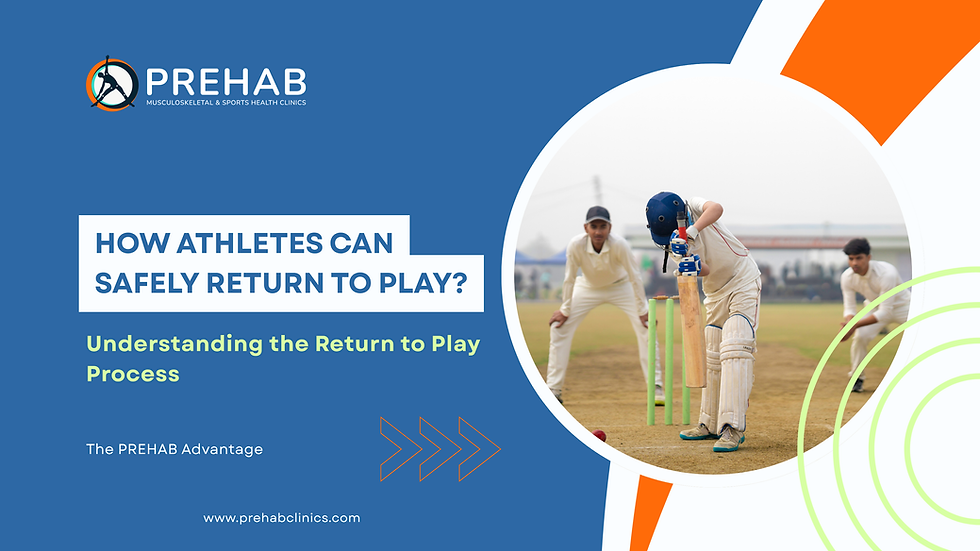Understanding the Pelvic Girdle: Key to Movement and Stability
- Prehab Healthcare
- Jun 3
- 3 min read
Updated: Jun 18
The Role of the Pelvic Girdle in Human Movement
The pelvic girdle is an essential structure in our bodies. It helps transfer loads and forces between the upper and lower body. Whether you're completing daily tasks or participating in sports, the pelvic girdle ensures smooth force transmission and balance. This critical function depends on coordinated movement and muscle activation in the pelvis.
Key Movements that power the Pelvis
The effective functioning of the pelvic girdle involves integrated movements. These include the innominate bones, sacrum, and lumbar spine working together in all three planes of motion: sagittal, frontal, and transverse. Key movement components are:
Anterior–posterior tilt and flare rotation of the innominate
Superior–inferior translation of pelvic bones
Sacral nutation and counter-nutation
Rotational movement of the sacrum and lumbar spine
These coordinated motions allow for optimal muscle alignment and load distribution. They help the pelvis act as a dynamic bridge in movement.

What happens when there is a Pelvic dysfunction?
Dysfunction in pelvic mechanics can lead to a breakdown in the integration between the lumbar spine, pelvis, and hips. This disconnection results in compensatory stress being placed on nearby joints and tissues. Common areas affected include the lumbar spine and lower limbs. Over time, this can lead to strain, pain, and decreased performance—especially as physical demands increase during activities like sports or heavy lifting.
Triggers Behind Pelvic Girdle Dysfunction
Several factors can cause dysfunction or pain within the pelvic girdle:
Movement restrictions may arise from protective muscle spasms. This often indicates a lack of proper conditioning or training.
Insufficient mobility and flexibility in the pelvis and hips can create issues.
Inadequate warm-up and cool-down routines are commonly overlooked.
Poor hydration, sleep, and recovery can affect overall performance.
High training loads without sufficient rest periods may lead to dysfunction.
While pelvic dysfunction was once primarily linked to contact sports like rugby and soccer, it has increasingly become common in endurance sports, such as long-distance running and bowling. Repetitive strain and seasonal overuse can exacerbate these problems.
Optimizing pelvic health: prevention and recovery
To improve pelvic girdle function and prevent pain, consider the following strategies:
Incorporate mobility drills: Engage in pelvic mobility drills and dynamic stretching to keep the area limber and flexible.
Focus on core strengthening: Use lumbo-pelvic control and stability exercises. Strengthening the core can provide better support for the pelvis.
Emphasize recovery: Regular recovery practices, hydration, and sufficient sleep help the body recover and remain resilient.
Balance training volume: It's crucial to balance your training loads with adequate rest. Avoid overloading the pelvis, as this will help mitigate the risk of injury.
A proactive, holistic approach can significantly reduce injury risk while supporting performance across various levels of activity.
Importance of professional guidance
Working with professionals, such as physical therapists or pelvic pain specialists, can provide additional insights into optimizing pelvic health. They can tailor programs to your specific needs, ensuring you maintain peak performance while minimizing the risk of injury.
By understanding the critical role of the pelvic girdle, we can appreciate its importance in human movement. Focusing on pelvic health can lead to improved strength, flexibility, and stability, ultimately enhancing athletic performance and everyday activity.
In conclusion, maintaining a proactive approach to pelvic health is imperative for anyone engaged in physical activity. This commitment will not only improve your performance but also contribute to long-term wellness.



Comments